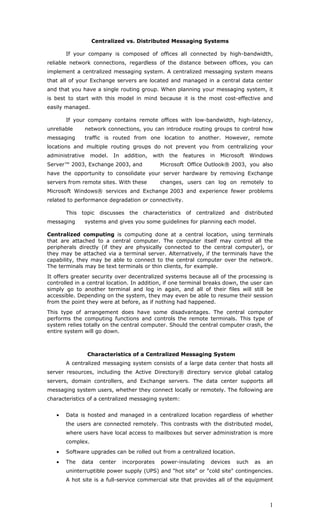This document discusses centralized and distributed messaging systems. A centralized system hosts all server resources in a central data center, allowing for easier management and security. A distributed system places servers locally at branch offices due to unreliable network connections between sites. Consider centralizing for cost savings if network prerequisites are met, and plan contingencies for potential single points of failure. Distributed systems are suitable when network conditions cannot support traffic to a central hub.



